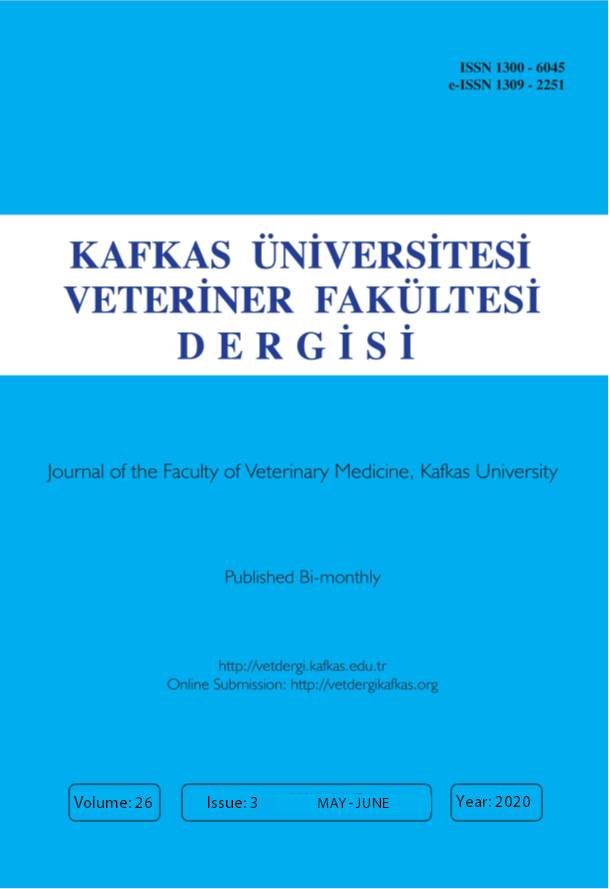
This journal is licensed under a Creative Commons Attribution-NonCommercial 4.0 International License
Kafkas Üniversitesi Veteriner Fakültesi Dergisi
2020 , Vol 26 , Issue 3
Detection of BVDV 1q in China: Genetic Characterization and Experimental Infection for the Investigation of It"s Pathogenicity
1College of Animal Science and Technology, Shihezi University, Shihezi, Xinjiang 832003, CHINA2State Key Laboratory of Sheep Genetic Improvement and Healthy Production/Xinjiang Academy of Agricultural and Reclamation Sciences, Shihezi, Xinjiang 832000, CHINA
3HouBo College of XinJiang Medical University, Kelemayi, Xinjiang 834000, CHINA DOI : 10.9775/kvfd.2019.23273 Bovine viral diarrhea virus (BVDV) is a pathogen that affects ruminants worldwide and is one of the most economically important diseases of cattle. Although BVDV infections have been increasingly reported in China, the pathogenesis and genetic characteristics of these BVDV isolates have not been thoroughly investigated. Here, we report the identification and characterization of a novel BVDV isolate, designated LC, which was isolated from the feces of a cattle with diarrhea. The complete genome of isolate LC was 12,271 nucleotides and contained a 5"-UTR of 389 nucleotides, a 3"-UTR of 189 nucleotides, and a large ORF encoding a polyprotein consisting of 3898 amino acids. Genomic comparisons and phylogenetic analyses of the complete genomic sequence clearly showed that the isolate was a BVDV-1q subtype. Experimental infection of calves with isolate LC resulted in the development of clinical signs including elevated rectal temperatures, nasal discharge and decreased leucopenia. Viral antigen was detected in infected animal tissues using immunohistochemistry. This is the first report of the genomic sequence of a BVDV-1q virus isolated from cattle. The virus strain was moderately pathogenic in calves and could potentially be used as a BVDV challenge virus to evaluate the efficacy of BVDV vaccines. Keywords : Bovine viral diarrhea virus (BVDV), Genomics, Genotyping, Pathogenesis










